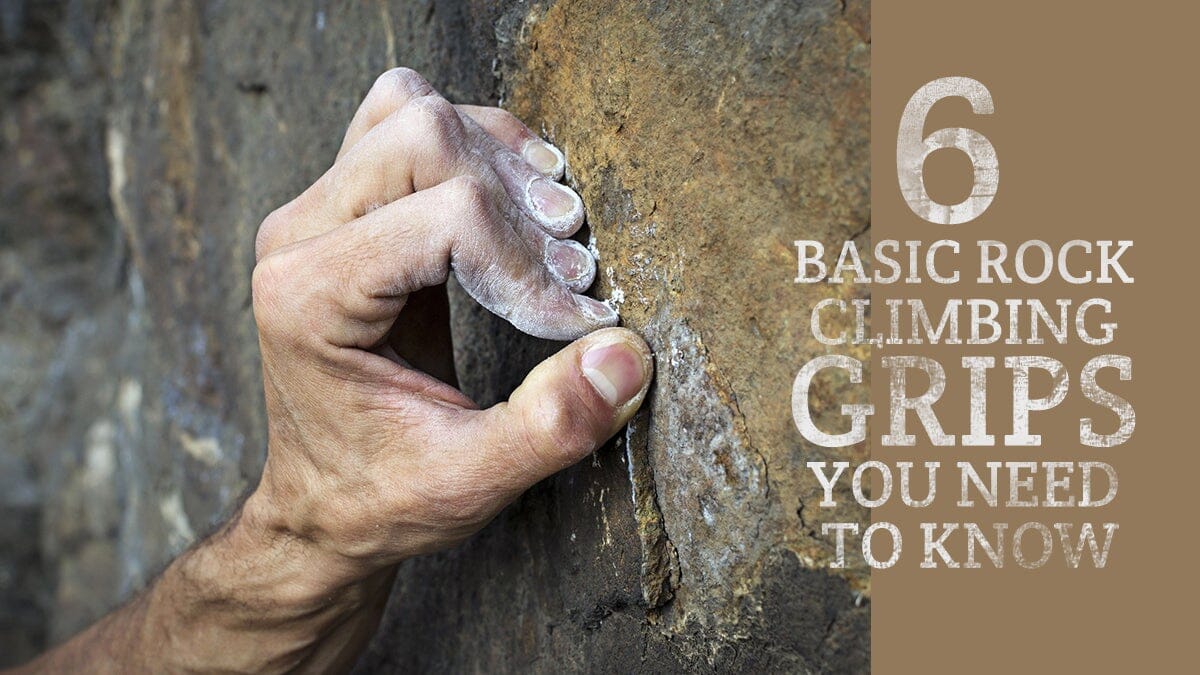6 Basic Rock Climbing Grips You Need to Know

Ascending up a tall rock climbing wall takes plenty of upper body strength, but your hands–specifically, the way you use rock climbing grips–can make or break your experience. The problem? It’s difficult to understand the types of rock climbing grips as a beginner.
Learn the basics six rock climbing grips and finger holds now and dominate your next visit to the wall.
Why You Need to Learn Rock Climbing Grips
First thing’s first: You don’t have to have superhuman upper body strength to climb a rock wall. For most people, the lower body (legs and feet) is much stronger than the upper body. Always keep your body weight centered over your feet as you climb.
That said, all of the lower body strength in the world won’t hold if you don’t know the main rock climbing grips and finger holds. The rocks built into climbing walls are made to challenge you in the same way as an outdoor climb. Each rock is made with different faces and requires you to use different holds or grips.
The main holds you’ll find in climbing gyms include:
- Rounded slopers. Bulging rocks that don’t have a right angle to hold.
- Flat edges. A typical rock that doesn’t give a lot of space to grip.
- Holes in the rock that only fit a couple of fingers or a whole hand.
- Rocks that are slightly detached.
- Rocks that you can pinch with either a few fingers or the whole hand.
The Six Basic Rock Climbing Grips and Finger Holds
To be a successful climber, you have to be able to traverse the various rock types using the right holds. If you want to get started as a rock climber, there are six types of rock climbing grips you need to learn.
Full Crimp and Half Crimp Grips. Perfect for flakes and small edges, the full crimp grip is when you grab with most of the pressure on the middle finger joints (with the thumb wrapped around the index finger for extra power). This grip puts a lot of pressure on fingers and can result in injury if not done correctly.
Open-Hand Grip. Used for grabbing slopers, the open-hand grip involves straight knuckles and spread fingers. This results in less stress on your hands and fingers but can feel like the weakest grip at first. Over time it will be the hold you use the most.
Pinch Grip. Pinch grips are another common grip used at rock climbing gyms. To do a pinch, you hold with an open-hand grip or half-crimp, then use the thumb to pinch the other edge of the rock.
Pocket Grip. A pocket grip uses one or more fingers, or a whole hand, inside the pocket hole. The middle finger is the strongest, so using that finger should be the default.
Friction Grip. Similar to an open-hand grip, this grip involves using the natural friction of your palms to hold onto a smooth rock.
How to Master Rock Climbing Grips and Finger Holds
Mastering rock climbing grips and finger holds isn’t something you do in one climb. It takes time–and the best way to learn is through professional guidance and practice. Butora offers climbing classes and private instruction for climbers of all levels, ranging from beginner to advanced. Contact us to start your rock climbing journey.




